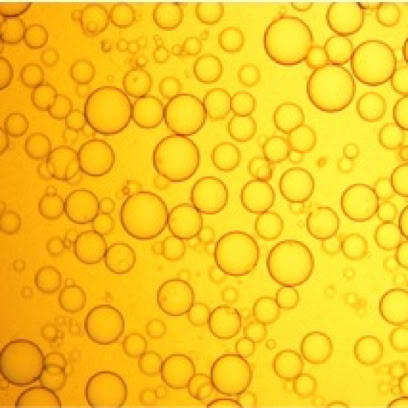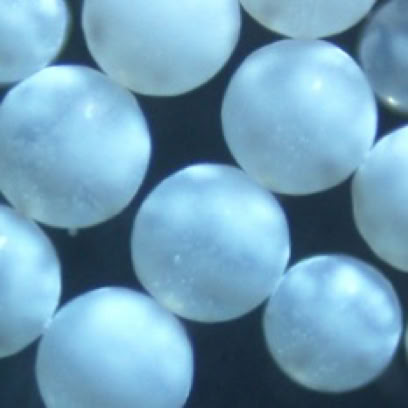Supramolecular Assemblies & Functional Nanomaterials
Supramolecular Assemblies & Functional Nanomaterials
Supramolecular Assemblies & Functional Nanomaterials
超分子化学研究室 へ(日本語)
Research works
Supramolecular assemblies
Functional π-conjugate polymers
Cellulose nanofibers
Core-shell microspheres
Hybrid hydrogels (webgel)
Others
Supramolecular assemblies
Fibrous self-assembly incorporated polymer film
Chirally-oriented lipid aggregates were doped into a solid polymer film, which was readily prepared by casting and removing a solvent from anionic L-glutamide-derived organogels and polystyrene. When a cationic achiral dye was mixed into this system, the resultant polymer film showed tunable circular dichroism (CD) due to chiral complex formation with the achiral dye on the highly-ordered structures based on the L-glutamide lipid.
Nano fibrous self-assemblies
Nano fibrous self-assembly was formed from peptide-derived lipids with various functional groups.

Nano fibrous self-assembly-incorporated polymer composite film
Nano fibrous seil-assemblies formed from peptide-derived lipid was incorporated into the polymer matrix. The composite polymer film showed fluorescence property with high Storks shift based on the highly-oriented structure of dye moieties of the lipid.


Selected publications
Stabilization of enhanced chirality from pyrene-containing L-glutamide lipid in methyl methacrylate by photo-induced polymerization.
M. Takafuji, A. Ishiodori, T. Yamada, T. Sakurai, H. Ihara.
Chemical Communications, pp.1122-1123, 2004.
Optical active polymer film tuned by chirally self-assembled molecular organogel.
M. Takafuji, Y. Kira, H. Tsuji, S. Sawada, H. Hachisako, H. Ihara.
Tetrahedron, Vol.63, pp.7489-7494, 2007.
Enclosure of Secondary Chirality Based on Highly-Oriented Lipid Aggregates into Polymer Sheet by Photo-Induced Polymerization of Polymerizable Monomer Gels
M. Takafuji, Y. Kira, A. Ishiordori, H. Hachisako, T. Sawada, H. Ihara.
Macromolecular Symposia, Vol.291-292, Issue 1, pp.330-336, 2010.
Hybrid hydrogels (webgel)
Nanoparticles-webbed hybrid gels
Recently hybrid hydrogels containing nanoparticles have been attracting considerable attention because of their wide range applicability in various fields. Hybridization of nanoparticles with the polymer hydrogel network improves the mechanical properties of the hydrogels. Furthermore, this method can be used to manipulate the optical, thermal, magnetic, and electric properties of the hydrogels.
We have also reported novel hybrid polymer hydrogels in which the polymer network was formed by webbing with silica nanoparticles as multi-crosslinking points (Webbing GEL). This hybrid hydrogels were prepared in a facile manner involved simple mixing of an aqueous solution of a water-soluble copolymer having reactive side chains with an aqueous suspension of silica nanoparticles. This facile method provided an important breakthrough for hydrogel preparation through a new cross-linking system with inorganic nanoparticles as multiple crosslinking points.
Self-assembly-crosslinked hybrid gels
Hetero-network hydrogels composed of hydrophilic polymers with terminal alkyl chains and nanofibrous self-assemblies were successfully fabricated. The gel formation was not observed in both cases of the self-assemblies in aqueous solution and hydrophilic polymer in aqueous solution. Furthermore the gel-to-liquid crystalline phase transition temperatures of nanofibrous self-assemblies were lowered by addition of hydrophilic polymers with terminal alkyl chains. From these observations, it was considered that the alkyl chains at polymer termini intercalated into the bilayer membrane-based nanofibrous self-assemblies to form cross-linking points. As far as we know, the hybrid hydrogel introduced in this communication is the first example of a hetero-network structure composed of supramolecular assemblies. When the hetero-network hydrogel was crushed by mechanical shearing, these hydrogels recovered by heating at temperatures above their gel-to-liquid crystalline transition temperatures.
webgel
Silica nanoparticle-webbed hybrid hydrogel is transparent and shows elastic property.



Gel particles
Gel particles can be easily prepared in the W/O suspension. The size and network density can be controlled by the mixing rate of nanoparticles and polymer.

Selected publications
Non-chiral polymer induced chirality enhancement in lipidic nanotube based hydrogel system.
F. Robel, M. Takafuji*, H. Ihara*.
Chemistry Letters, Vol. 46, pp.1466-1469, 2017. doi.org/10.1246/cl.170586
A hetero-network hydrogel with self-assembled nanofibers as multiple-crosslinkers and its liquid-crystal-driven healing properties
M. Takafuji*, F. Robel, H. Ihara*.
Colloid and Interface Science Communications, Vol.19, pp.9–13, 2017.
A facile preparation method for self-assembled monolayers with silica particles on polystyrene-based microspheres.
H. Ihara, S. Kubota, A. Uchimura, Y. Sakai, T. Wakiya, M. Mizanur Rahman, S. Nagaoka, M. Takafuji.
Materials Chemistry and Physics, Vol.114, pp.1-5, 2009.Strategy for preparation of hybrid polymer hydrogels using silica nanoparticles as multifunctional crosslinking points.
M. Takafuji, S. Yamada, H. Ihara.
Chemical Communications, 47, 1024-1026 , 2011.
Programmable responsive shaping behavior induced by visible multi-dimensional gradients of magnetic nanoparticles.
Y. Liu, M. Takafuji, H. Ihara, M. Zhu, M. Yang, K. Gu, W. Guo
Soft Matter, Vol.8, pp.3295-3299, 2012.
Magneto-responsive organogels prepared through surface-initiated atom transfer radical polymerization on iron nanoparticles.
Miklos Czaun, Laszlo Hevesi, Makoto Takafuji, Hirotaka Ihara.
Journal of Nanoscience and Nanotechnology, Vol.9, pp.123-131, 2009.
A novel approach to magneto-responsive polymeric gels assisted by iron nanoparticles as nano cross-linkers.
Miklos Czaun, Laszlo Hevesi, Makoto Takafuji, Hirotaka Ihara.
Chemical Communications, pp.2124-2126, 2008.
Core-shell hybrid particles
Microspheres with layered-shell of nanoparticles
The hybrid microspheres with layered shell of inorganic nanoparticles were prepared by modified suspension polymerization of polymerizable monomers containing surface-modified (modifier: 3-methacryloyl propyl trimethoxy silane) inorganic nanoparticles. Typical SEM images of hybrid particles with silica nanoparticle shell were shown in Fig. 1d. It is expected that the silica nanoparticles were self-assembled at the interface between monomer droplet and aqueous phase in the O/W suspension, and finally immobilized on the surface of polymer microsphere through crosslinking reaction (covalent bond). The packing density of silica nanoparticles could be facilely controlled by the concentration of the silica nanoparticles. Similar hybrid microspheres were successfully obtained with other inorganic nanoparticles such as titania, ceria and diamond nanoparticles.
The surface layering of inorganic nanoparticles was also demonstrated by the hybridization with supercritical carbon dioxide (scCO2). Typical micrographs for the layered shell of nano-diamond and graphite were depicted in Figure 1a and 1b respectively. The surface of polymer core was softened by lowering the glass transition temperature in scCO2 and the nanoparticles were physically attached on the surface of the polymer core.
Core-shell microspheres
Silica nanoparticle-Core-shell microspheres with a layered-shell of inorganic nanoparticles were prepared by (1) supercritical carbon dioxide hybridization method and (2) modified suspension polymerization method.
TOP: Nano-diamond
MIDDLE: Graphite carbon
BOTTOM: Nano-silica



Selected publications
Fabrication of hollow silica microspheres with orderly hemispherical protrusions and capability for heat-induced controlled cracking.
M. Takafuji*, N. Hano, Md. A. Alam, H. Ihara*.
Langmuir, Vol. 33 (40), pp 10679–10689, 2017. DOI: 10.1021/acs.langmuir.7b02223
One-pot preparation of polymer microspheres having wrinkled hard surfaces through self-assembly of silica nanoparticles.
N. Hano, M. Takafuji*, H. Ihara*.
Chemical Communications, Vol. 53, pp.9147-9150, 2017.
One-pot green process for surface layering with nanodiamonds on polymer microspheres.
M. Takafuji*, N. Hano, H. Yamamoto, N. Ryu, M. Horikawa, S. Nagaoka, H. Ihara*.
Journal of Supercritical Fluids, Vol.127, pp.217-222, 2017.
Facile and versatile method for preparing core-shell microspheres with controlled surface structures based on silica particles-monolayer.
A. Uchimura, S. Kubota, S. Yamada, T. Wakiya, M. Takafuji, T. Shirosaki, S. Nagaoka, H. Ihara.
Materials Chemistry and Physics, Vol. 129, Iss 3, pp. 871-880, 2011.
A facile preparation method for self-assembled monolayers with silica particles on polystyrene-based microspheres.
H. Ihara, S. Kubota, A. Uchimura, Y. Sakai, T. Wakiya, M. Mizanur Rahman, S. Nagaoka, M. Takafuji.
Materials Chemistry and Physics, Vol.114, pp.1-5, 2009.
Polymer-grafted particles
Polymer-grafted magnetic nanoparticles
Cationic polymer-grafted magnetic nanoparticles were prepared by grafting of a polymer with terminal reactive group onto the surface of magnetic nanoparticles. The ligand-branched polymer-grafted magentic nanoparticles were used for the magnetically-collectable selective adsorbent of metal ions. The Mag- Im18 showed a selective binding of divalent metal ions with a binding strength in the order of Cu2+ . Ni2+ > Co2+. At pH 5.3, the limiting adsorption capacity for Cu2+ ion was 0.11 mmol g-1. Selective separation/recovery of Cu2+ ions from a Cu2+/Co2+ aqueous solution was demonstrated over a pH range of 3-7.
Pyridinium-based cationic polymer-grafted magnetic nanoparticles were useful for the gene delivery system. In vitro transfection experiments were assayed in human embryonic kidney 293 cells (HEK293 cells) using pmaxGFP plasmid as a reporter gene. Gene expression was found to be strongly influenced by the length of the side alkyl chains. Higher transfection efficiencies were observed with longer alkyl chains (C6 > C4 > C2 ≥ C1), indicating that hydrophobic side chains were effective in increasing transfection efficiency.
Polymer-grafted porous silica for separation science
Polymer-grafting is a useful technique to modify the surface of substrates. The terminally-grafted polymer exhibits different behavior from monomer-grafting. In last two decades, we have applied polymer-grafting method to functionalize the surface of porous silica microspheres for HPLC packing materials. The surface polymer recognized molecular shapes in reversed phase (RP) mode, in which the polymer chains worked effectively. Recently, we demonstrate to integrate pyridinium-based functional ionic groups-branched polymer onto the surface of porous silica microspheres for separation materials. Figure 1 showed chemical structures of poly(vinyl pyridinium)-grafted porous silica microspheres, to which various side chains could be introduced to pyridyl groups through quaternization reaction of alkyl halide. In this paper, we introduce the preparation of zwitter ionic polymer-grafted porous silica and their recognition behaviors in hydrophilic interaction liquid chromatography (HILIC) mode separations. A HILIC is recently developed for effective separations of polar compounds using polar stationary phases with polar mobile phases and the HILIC technology is known as a practical tool in separations of hydrophilic and/or charged bio-molecules such as peptides, proteins, oligosaccharides, drugs, metabolites and various natural compounds.
Polymer-grafted magnetic nanoparticles
Cationic poly(vinyl pyridinium)-grafted magnetic nanoparticles were excellent candidate for the magnetically-responsive carrier for gene delivery. (Magnetofection)

Polymer-grafted porous siica microspheres for separation science
Polymer-grafted porous silica microspheres are applied to the HPLC packing materials. The surface polymer phase exhibit unique separation behaviors based on the high mobility of the polymer backbone.

HILIC mode separation
Poly(vinyl pyridine)-porous silica microsphere is a candidate for new platform of the cationic polymer phase on HILIC mode separation.

Selected publications
Chemically tunable cationic polymer-bonded magnetic nanoparticles for gene magnetofection.
M. Takafuji*, K. Kitaura, T. Nishiyama, V. Gopal, T. Imamura, H. Ihara*.
Journal of Materials Chemistry B, Vol.2, pp.644-650, 2014.
Surface charge controlled magnetic nanoparticles with grafting of poly(4-vinylpyridine).
Makoto Takafuji, Takamasa Mimaki, Zhenghe Xu, and Hirotaka Ihara.
Journal of Nanoscience and Nanotechnology, Vol. 5, No. 3, pp. 394-397, 2005.
Preparation and characterization of poly(1-vinylimidazole)-grafted magnetic nanoparticles.
M. Takafuji, S. Ide, H. Ihara, Z. Xu.
Chemistry of Materials, Vol. 16, pp.1977-1983, 2004.
Tuning of Separation Mode using Pyridinium Salt-Branched Ionic Polymer-Grafted Silica as Stationary Phase in HPLC.
M. Shahruzzaman, M. Takafuji*, H. Ihara*.
Chemistry Letters, Vol.45, pp.13-15, 2016.
Porous silica particles grafted with an amphiphilic side-chain polymer as a stationary phase in reversed-phase high-performance liquid chromatography.
M. Shahruzzaman, M. Takafuji,* H. Ihara*.
Journal of Separation Science, Vol.38, pp.2403-2413, 2015.
Chiral separation by terminal chirality triggered P-helical quinoline oligoamide foldamer.
H. Noguchi, M. Takafuji, V. Maurizot, I. Huc, H. Ihara.
Journal of Chromatography A, Vol. 1437, pp.88–94, 2016.
Effects of substitution groups of glutamide-derived molecular gels on molecular shape recognition.
H. Noguchi, T. Charoenraks, M. Takafuji*, H. Ihara*.
Journal of Chromatography A., Vol.1392, pp.56-62, 2015.
Organic thin layer of molecular gel-forming glutamide lipid on silica particles for practical application to molecular recognition.
M. Takafuji, T. Charoenraks, J. Izumi, H. Ihara
Chemistry Letters, Vol.41, pp.181-183, 2012.
copyright @ 2016-2025, Makoto Takafuji, all rights reserved












